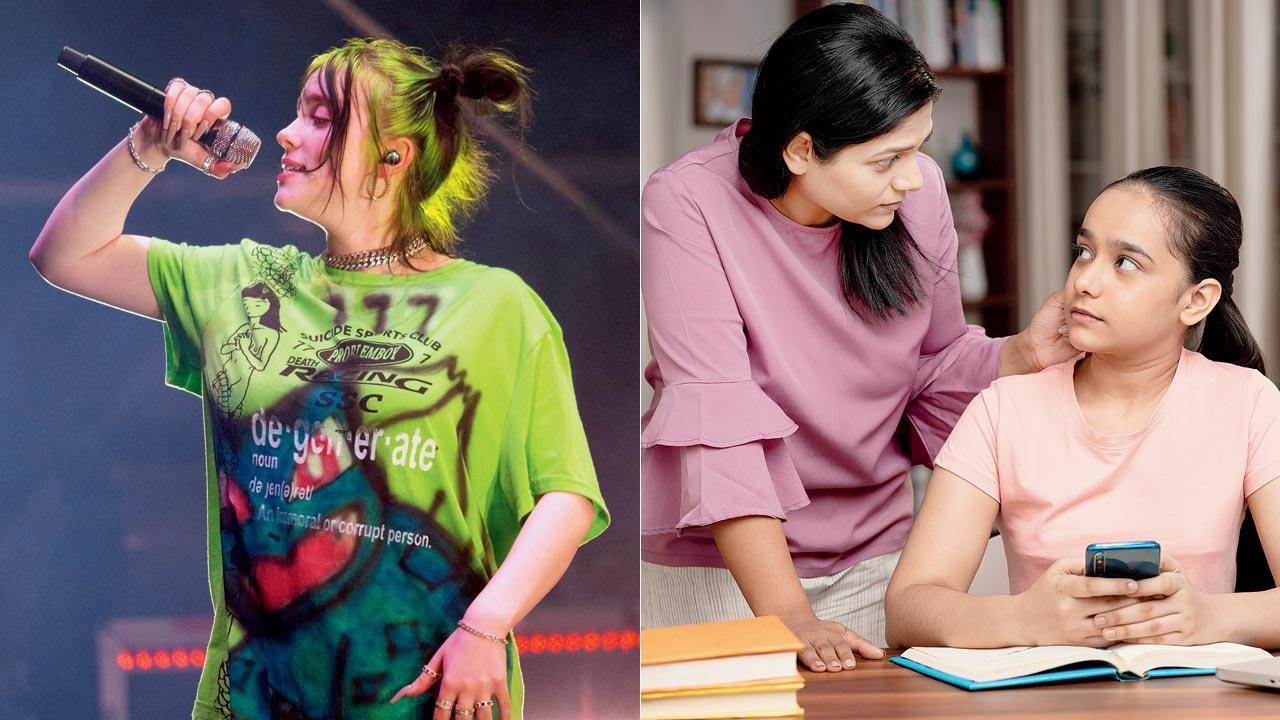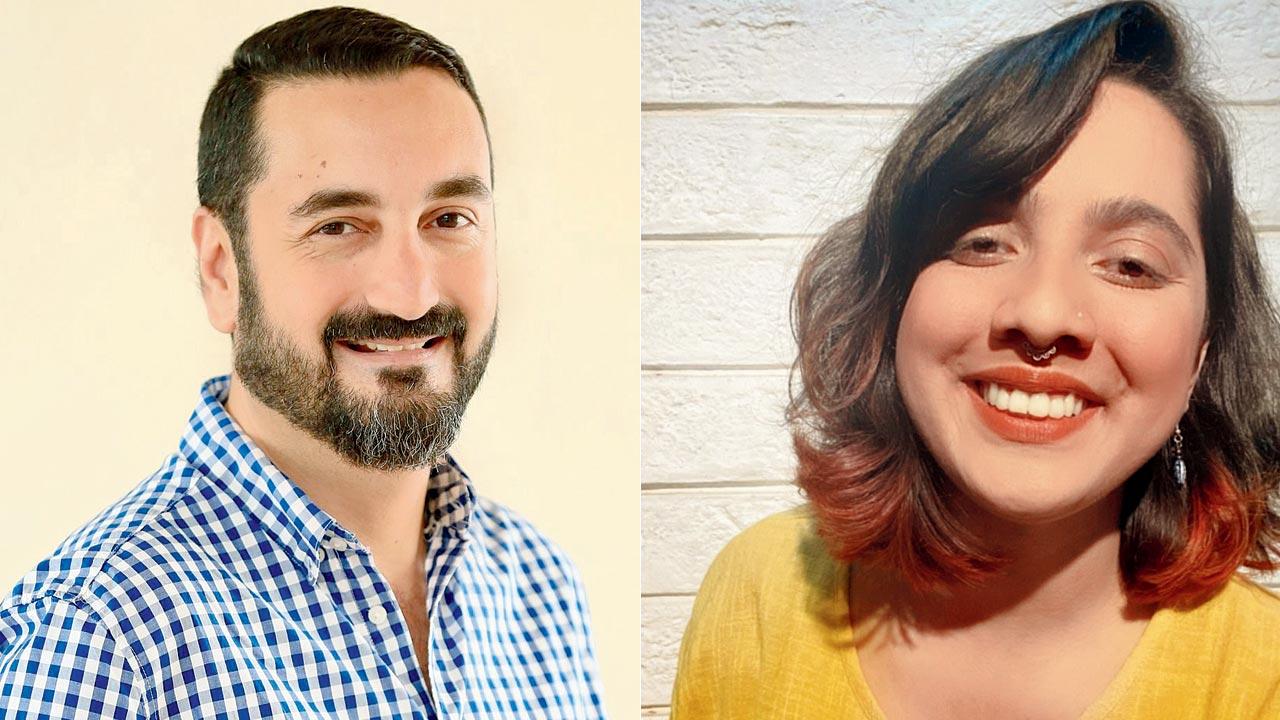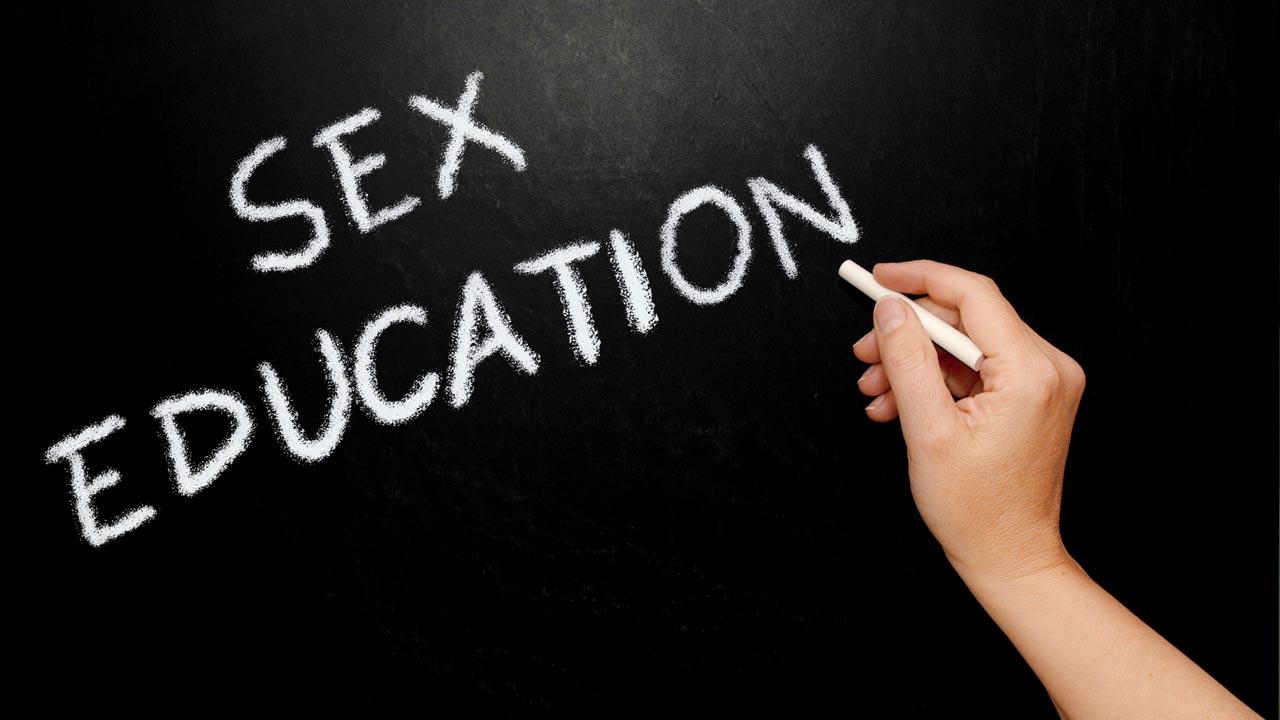With singer Billie Eilish revealing how watching pornography as a child messed up her idea of sex, consent and intimacy, experts discuss its effect on young minds and highlight the need for well-rounded sex education

Billie Eilish in performance; (right) parents should try to keep an open line of communication with their children. Pic/Getty Images
When singer-songwriter Billie Eilish recently admitted that watching pornography as a child — since the age of 11 — “destroyed” her brain, it opened up a conversation on the effect of adult films on young minds, the uncomfortable silence around it, and the need for holistic sex education. Dr Zirak Marker, a child, adolescent and family psychiatrist, and advisor, Mpower, shares that when children or teenagers view sexually, not-age-inappropriate content, such as pornography, it leads to a skewed idea of sex, consent and intimacy. For instance, the 20-year-old multiple Grammy Award-winning sensation went on to reveal that the first few times she had sex, she couldn’t say no to things she didn’t like, because she felt that that was what she was “supposed to be attracted to”.
ADVERTISEMENT
Effect on young minds
Sex educator Apurupa Vatsalya (whose pronouns are she/they) notes that young people start getting exposed to pornography as early as when they’re nine or 10. “Typically they’ll begin with Google-ing something like ‘naked bodies’ because they’re naturally curious about bodies, especially those that are different from theirs.” Since today’s kids are digital natives, they may accidentally chance upon porn while working on a project or playing a game, she adds. And when children do come across porn, they don’t realise that most of the content may be exaggerated, contrived, immoral, perverse or abusive in nature, and that this is not normal, points out Dr Marker.
 Dr Zirak Marker and Apurupa Vatsalya
Dr Zirak Marker and Apurupa Vatsalya
Owing to the exaggerated, unreal portrayal of sex and bodies in pornography, many sexually active teenagers may develop body image issues and feel complexed about the duration of intimacy, Dr Marker notes. “They may feel pressured to perform in a manner that they have seen in these videos. And when that’s not possible, they may feel low, depressed or incapable. In some cases, this may lead to sexual dysfunction, psychological problems, perverse fetishes, a skewed perception of masculinity, coercion, and objectification of human bodies, which can adversely affect their partners and subsequent relationships,” he adds.
Shatter the myth
Parents can’t monitor teens or pre-teens 24/7. What is needed, instead, is an effort to actively foster conversation on porn with young people, and shatter the myths it perpetuates, Vatsalya explains:
. Explain that the body types represented in porn, and the sizes and shapes of their genitalia are not the norm.
. The lack of consent, contraception and care that we see are not the norm, and are harmful and criminal.
. Acrobatic sex acts in porn are not normal. Remind them that there’s no need to engage in acts that make them uncomfortable.
. Women and female-bodied persons don’t exist solely for the pleasure of men, and are not to be objectified, as the kind of porn that’s easily accessible is male gaze-oriented.
. Unethical porn is free for a reason and often pirated. Explain to the child that the porn industry is exploitative and that viewing porn in a public space is illegal; creating porn is unlawful, as is sharing it in an electronic form.
Communication is key
Experts suggest developing a positive atmosphere where open, frank conversations are encouraged.
. Communicating with our children invests them with knowledge, compassion and character — all essential qualities for healthy, all-round development, says Dr Marker. Vatsalya adds that parents, educators and caregivers must foster open conversations and critical thinking.
. “When we announce a blanket ban on something without examining its nuances and making it a dialogue with young people, it’s unlikely to work,” claims Vatsalya, adding that we must recognise young people as sexual beings. “Another way to raise young people in a pleasure-affirmative manner is to have conversations about these topics from beyond just safety and health perspectives,” she adds. Discuss consent, while respecting their bodily autonomy and practising consent with them in social situations.
. Schools and stakeholders in education must take initiative to introduce these topics across age groups, points out Dr Marker. He stresses on the need to give out realistic, age-appropriate information with the correct biological vocabulary, which helps to normalise these concepts among children, devoid of any judgement.
. Make room for an approach where children confront their own biases and even hold space for the grief and confusion they might be experiencing. “If a parent has grown up without sex education, they might find it overwhelming to have conversations on sex, sexuality and porn with their children. Creating a foundation where conversations on topics such as bodies, changes or feelings, are as casual as dinner-table talk will set the stage for conversations on more mature topics incrementally,” Vatsalya suggests.
. If you discover that your child is watching porn, don’t shame or chastise them. Instead, explain the reality behind porn and ensure you help them process the graphic content. “A sex-negative upbringing can have a direct impact on a person’s self-worth, romantic availability, mental health, and partner choices. Offer a safe space so they can satiate their curiosity. Also, you don’t have to have all the answers. It’s okay to reach out to an expert to learn more or help initiate the conversation with your children,” Vatsalya signs off.

Need for better sex education
“It’s an undeniable fact that porn has become a predominant channel for sex education for young people. In the context where adults who are invested in the healthy development of young people are gatekeeping information about sex, sexuality, and relationships, and because there are real sociocultural and legal barriers, porn tends to make such information readily
available,” asserts Vatsalya. She reiterates the need for evidence-based, non-judgemental, pleasure-centric and inclusive digital sex education.
PARENT SPEAK Diya Ramachandran, mother to 13-year-old girl and nine-year-old boy, Juhu
I put my elder one through an informative workshop [pertaining to age-appropriate sex education] when she was 11 and also personally explained the sexual act to her; her school, too, did a good job of it. She also got a book from school titled Just For Girls — A Book About Growing Up. The boys also got a similar book, and they had to exchange and read each other’s books, which was a helpful activity.
I try to explain concepts to them as and when things come up, for instance, when they’re watching something, or reading. I realised that my son was curious about women’s bodies, and explained to him that he can come and ask me about it instead of looking for information in the wrong place. I have this book called How I Got My Belly Button by Anju Kish [a title for children on puberty, growing up and sex], which I’ve showed them. I think in a few years, I’ll be speaking to my daughter about topics such as contraception and pleasure, but right now, she’s too young. Similarly, pornography is not for their age — my kids know that I’m against things that are not age-appropriate.
You know, no one’s got this right; it’s not like there’ll be one great day where you’ll sit down and have this talk — it just comes up, and as a parent, you have to keep your antenna up. I try to be as open as possible. For me, sex education is about giving them the right information at the right age, and fostering an open line of communication with them. I also think the messaging starts very early — from the concept of consent, good and bad touch, nudity and privacy.
 Subscribe today by clicking the link and stay updated with the latest news!" Click here!
Subscribe today by clicking the link and stay updated with the latest news!" Click here!







